The Old Town dinghy, a classic yacht tender, was once a staple offering in the catalog of the Old Town Canoe Company. It’s a lightweight beauty with a bright-finished interior and a painted, canvas-sheathed hull. Structurally, it looks like a canoe, but it has the shape of a versatile small boat—one that motors, sails, and rows respectably.
I’ve had one of these boats in my life for about as long as I can remember. When I was a kid, my grandfather had a 9-footer in his basement. Nobody knows exactly where it came from, but he’d owned an ACF cruiser in his younger days, and I’d guess that the dinghy conveyed with that boat when purchased, but not when sold. It must have spent a decade or two in that basement, out of the elements, when my parents adopted it as a tender for our 35′ Lion-class sloop.
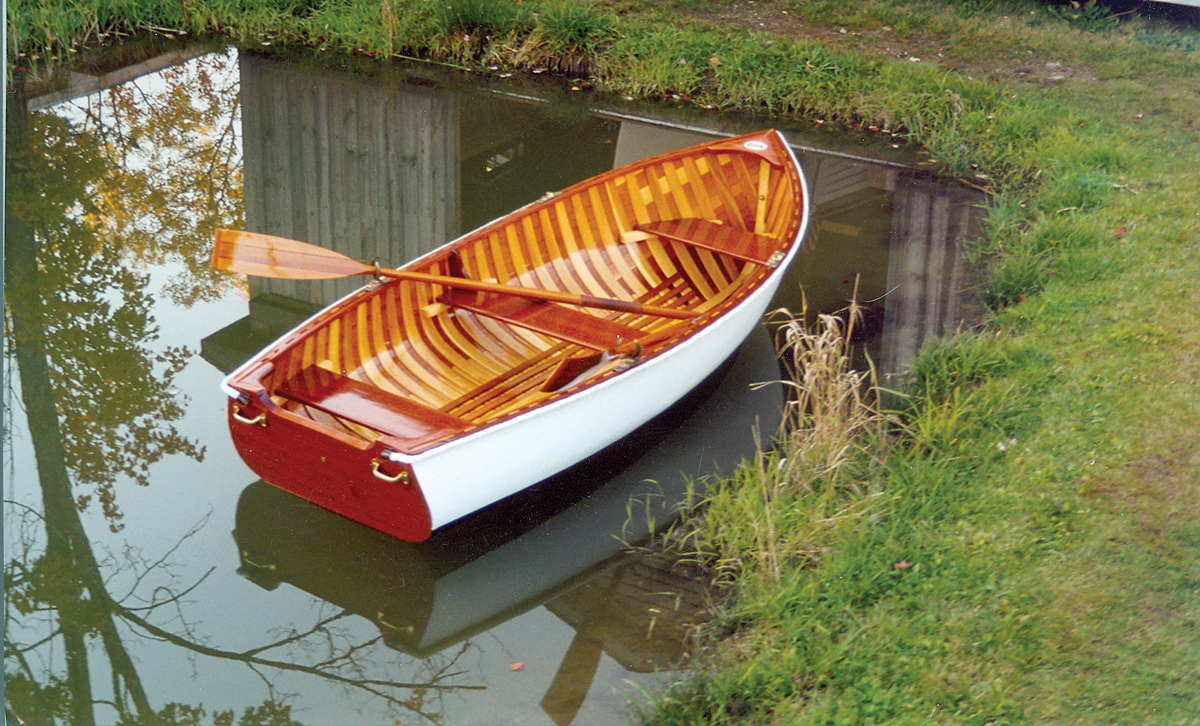 Island Falls Canoe
Island Falls CanoeFor many years, the Old Town Canoe Company of Old Town, Maine, built a line of canvas-covered cedar dinghies using the same construction as that of their legendary canoes. Today, canoe builder Jerry Stelmok, working with his colleague Jonathan Minott, continues that tradition. Shown is a newly built 10-footer.
That was in the mid-1970s. We strapped a 3 1⁄2-hp Eska outboard from Sears on the dinghy’s transom, and I spent uncounted hours tearing around the harbor in that little boat, often with two or three friends as crew. The boat also ferried kids, adults, and supplies ashore for beach picnics. It served us well for several years as a tender, as it towed well and it carried a load, but with a new cruising boat came a new dinghy, and the old Old Town went back into storage. By my mid-teens, I’d laid claim to it, and my ownership has been uncontested for the past 30 years.
The boat was in excellent shape when I decided it was mine—though it needed refinishing. I had the time and inclination to do this back then, and so I spent many evenings—and a fair amount of methylene chloride—removing the old finish, bleaching the bare wood, and building nine coats of varnish. I relaunched that boat with a vintage pair of oars and a British Seagull outboard purchased with my high-school graduation funds, as the old Eska had become something of a lab cat for my older brother and me: We’d learned about internal combustion by taking it apart and putting it back together one too many times.
Thankfully, I did not indulge my youthful impulse to tinker with the Old Town. I’d thought about adding a sailing rig—and thus cutting a daggerboard slot and mast partners, and mounting a rudder. But I didn’t do that, and so the boat is still configured as it was the day it left the factory. Old Town did make a sailing model of this boat, but my bastardization of it would have sullied the boat’s originality. The Old Town dinghy has a design pedigree that I learned of only last year: B.B. Crowninshield, the great early-20th-century Boston Brahmin naval architect, designed it. Originality is paramount for a boat of this lineage and, as luck would have it, you can still have a brand-new— and original—Old Town dinghy if you order one from Jerry Stelmok.
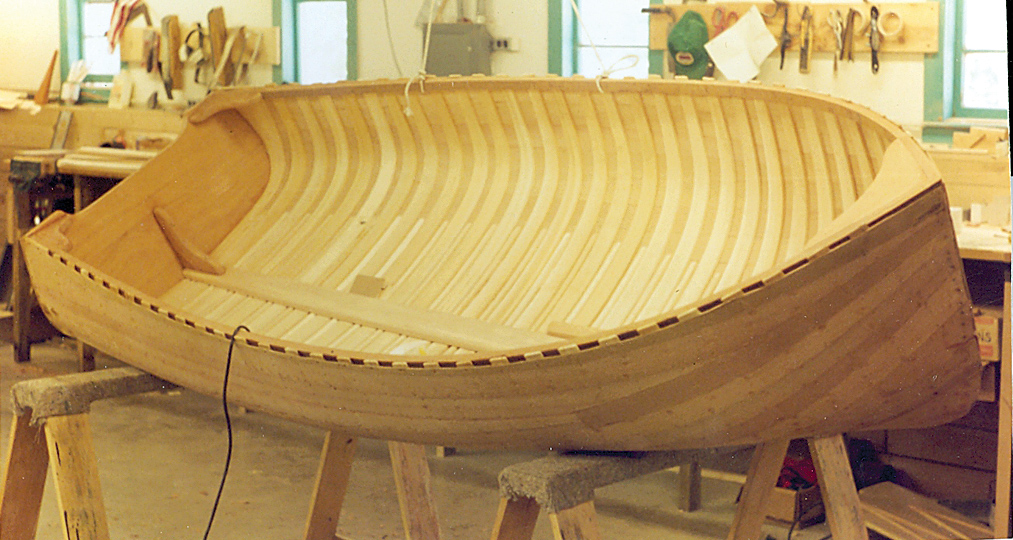 Island Falls Canoe
Island Falls CanoeAn Old Town dinghy in Jerry Stelmok’s Island Falls Canoe Shop, nearly ready for its canvas sheathing.
Jerry Stelmok carries forward the tradition of the Old Town Canoe Company, a business named for its location: Old Town, Maine, near the university town of Orono, which itself is home to the legendary oar- and paddlemaking company Shaw & Tenney (see page 40). Old Town Canoe today manufactures a big range of canoes and kayaks in molded plastic. Stelmok, on the other hand, builds wood-and-canvas canoes, and Old Town Dinghies, at his shop in Atkinson, Maine.
Wood-and-canvas canoes are an evolution of the famed Native American birchbark canoes. They are framed in thin cedar (1⁄4″ or so), planked in a similar thickness of cedar, and, instead of birchbark, are sheathed in stretched canvas. The weave of the canvas is filled with a proprietary compound, and the hull is then painted. The result is a strong and light boat, watertight—and heavier than when dry—after a short period of swelling.
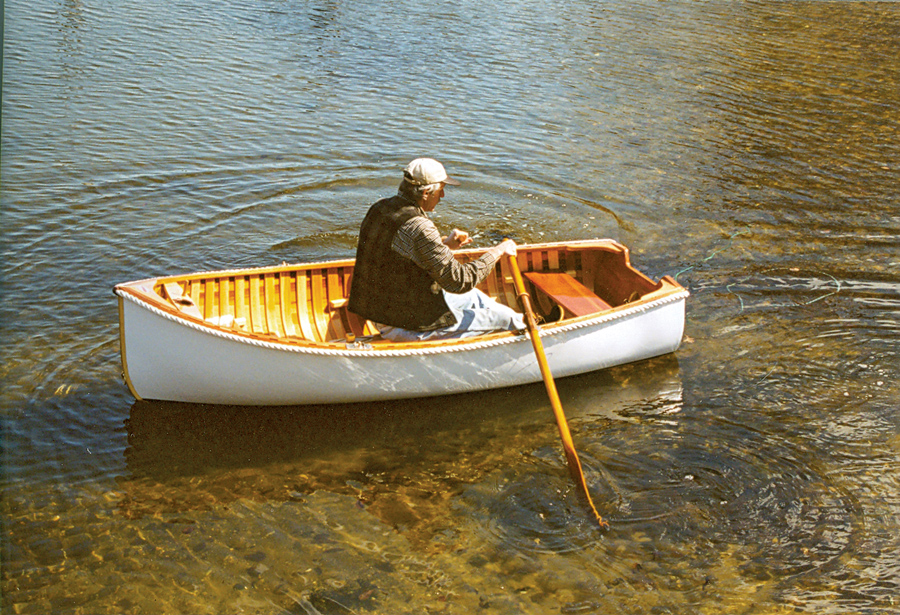 Island Falls Canoe
Island Falls CanoeJerry Stelmok at the oars of a 9’ Old Town dinghy. Old Town’s distinctive oarlock type may still be purchased new from Shaw & Tenney in Orono, Maine.
The woodworking portions of this operation require a robust building jig—a labor-intensive affair justified only by the promise of a healthy production run. The Old Town Canoe Company can no longer justify this sort of handwork, but Stelmok builds and sells Old Town’s dinghies. The dinghy line consists of a 7′ 6″ hull, a 9′ one, and a 10′ one. Stelmok also builds Old Town’s cedar-and-canvas canoes; those boats are marketed by Old Town itself.
Stelmok builds his boats exactly as Old Town did in the 1920s. He fits them out with Old Town’s distinctive patent swivel oarlocks which, in effect, reverse the mechanics of common oarlocks: A plate-mounted pin is permanently fastened to the boat’s gunwale, and the oarlock itself has a hole in it, to slip over and rotate on the pin. Set in a fore-and-aft position, the oarlock is captured by the gunwale hardware; turn it athwartships, and it can be easily lifted free. The boat’s rails— and nearby boats—are protected by a rope fender set into a cove in the outwale. While this arrangement is not as protective as the ubiquitous rubber-cored can- vas gunwale guard we see on many dinghies today, it just looks right on an Old Town dinghy. And it performs well, too, as long as the screws used to fasten the rope guard are set well below the surface.
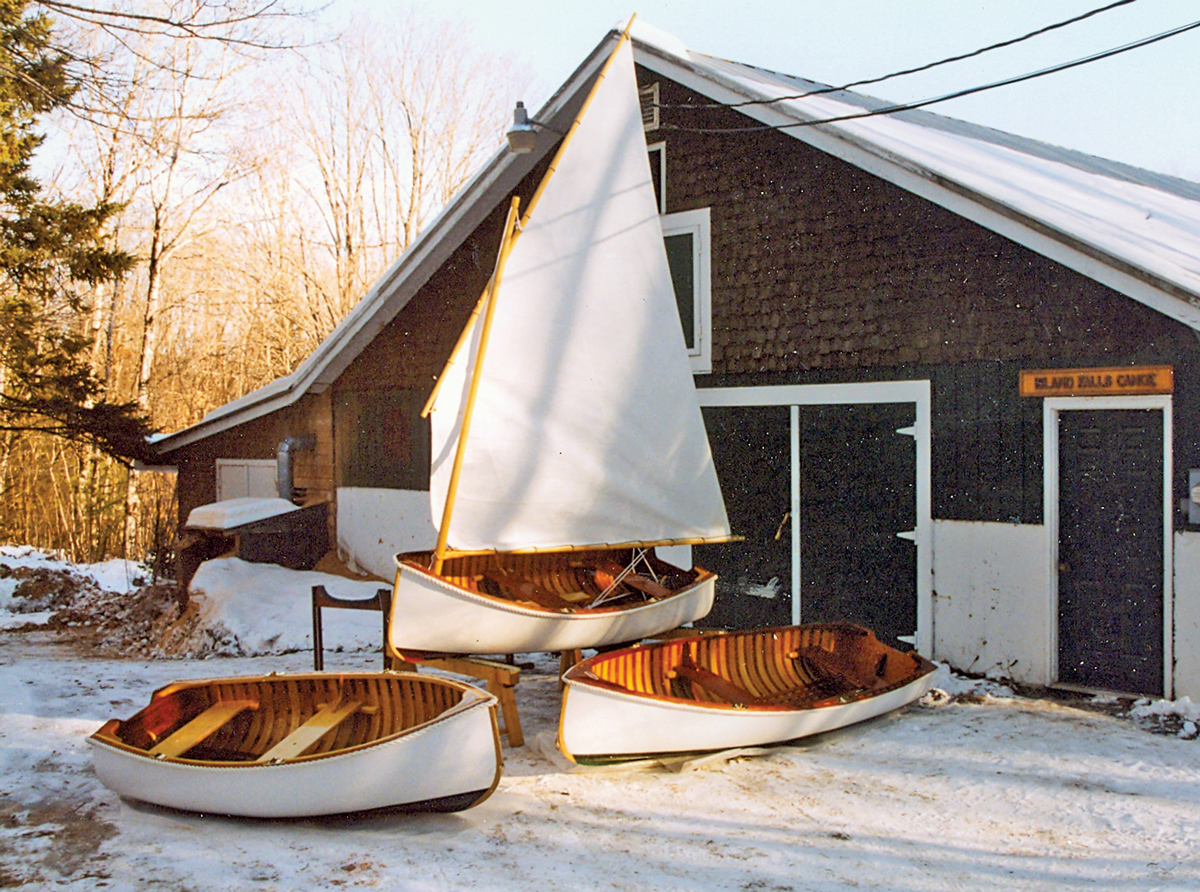 Island Falls Canoe
Island Falls CanoeIsland Falls Canoe builds a range of Old Town dinghies, including 7′ 6″, 9′, and 10″ models.
It’s been said time and time again that every boat is a compromise. If you want a pure rowing boat, efficiency is the key, and the key to efficiency is a narrow, lightweight hull. If you want a motorboat, you might add some buoyancy, or “bearing,” aft to float a motor and to keep the boat from squatting as speed builds. For a sailboat, a clean entry and a fine stern are two factors that contribute to good performance.
The Old Town dinghy is a beautiful average of these three traits. It is somewhat bluff bowed, so it doesn’t grow tiddly when one ventures into the bow to tend the painter. But the waterline entry is sufficiently fine to allow easy progress through the water without plowing it up. Firm bilges keep the boat on its feet when lightly loaded, and the load waterline tucks in slightly at the stern, reducing drag. This tucked-in waterline is complemented by a handsome tumblehome shape in the transom. A shallow cutout in the transom confirms that this boat is, indeed, meant to carry an outboard motor if one is desired. If my earlier memories of this boat are to be trusted, I recall that the boat motors rather well. But I’ve become jaded to the concept of low-horsepower outboards on dinghies, finding them a loud and unnecessary storage burden for short trips between ship and shore. A pair of 7′ oars will give that old Eska a run for its money, and the oars always start.
With only the rower aboard, the boat responds quickly to the oars and carries easily between strokes. A single passenger complicates things, because my boat does not have a forward rowing station. The added weight, therefore, immerses the lower portion of the transom, making rowing, literally and figuratively, a drag. A third passenger cleans up the trim—as would a forward rowing station. I could add this station, I suppose, as Old Town oarlocks are often available where used bronze hardware is sold; indeed, two separate pairs of them on eBay are the subjects of fierce bidding wars as I write this. Perhaps I’ll consider this addition during my next overhaul of the boat, though I’m loath to change anything now. But I would add floorboards, as these dinghies have no floor timbers, and the bilge, built of nothing but soft cedar, could use a little protection—and more even weight distribution. At the moment, I ask my passengers to keep their weight on the keel batten until they’re seated.
My dinghy lay in storage for several years until I needed a tender about 15 years ago. I blew the dust off, gave her a coat of paint and varnish, launched her, and towed her behind a 28′ sloop for 150 shore-hugging miles from Massachusetts to midcoast Maine. After a day of swelling, her cedar planking was tight and she nearly doubled in weight—which is not a bad thing, since, when dry, the boat was shockingly light. She has stood up well to periods of intense use punctuated by dormancy. Despite its light construction, it’s a tough and durable boat—a fact well proven by whitewater canoes built in similar fashion. If you’re seeking a classic yacht tender in this size range, the Old Town dinghy deserves serious consideration.
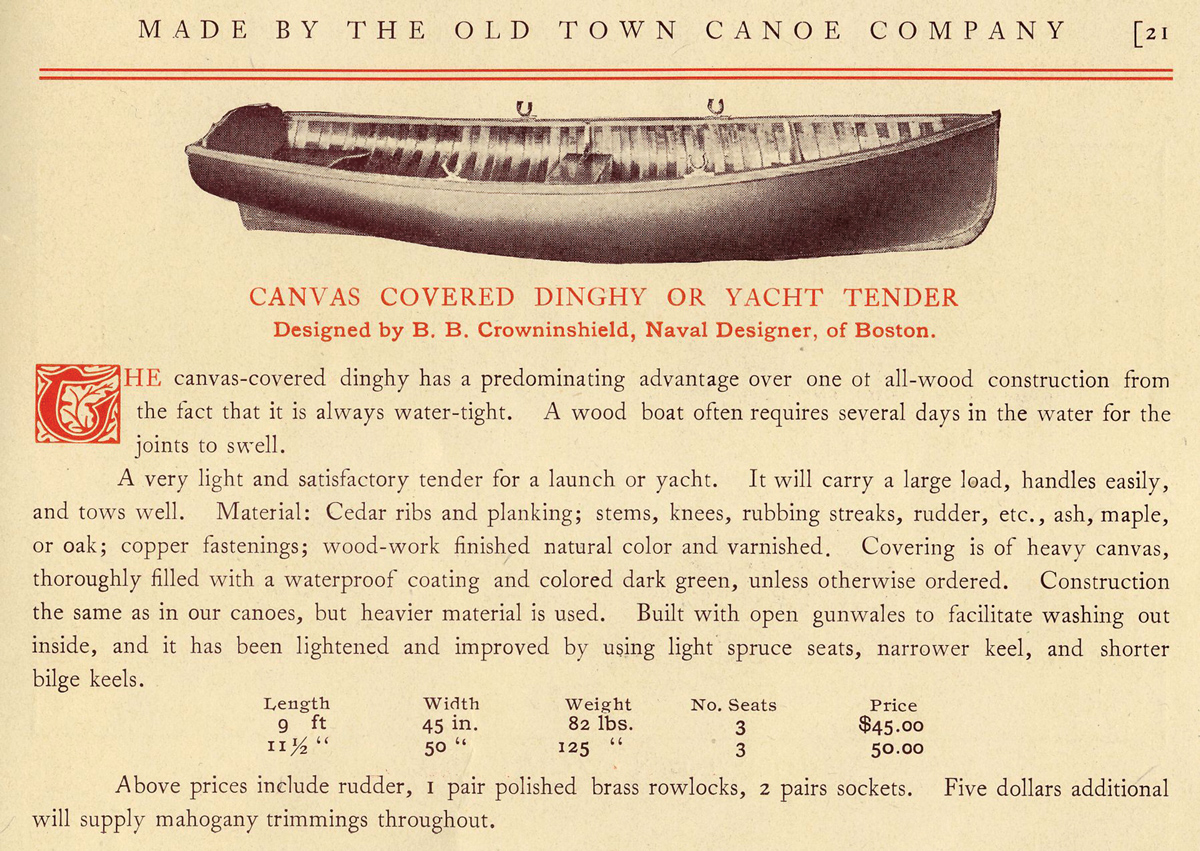 Courtesy of Benson Gray
Courtesy of Benson GrayOver the years, the Old Town Canoe Co. offered several versions of its cedar-and canvas dinghy. The first, designed by B.B. Crowninshield and shown here in this 1907 catalog, was 9’ long and 45” wide. The boat’s dimensions remained unchanged until 1927, when the “Depth Amidships” was listed as 16”; the 1928 catalog lists the width as 46” with a depth of 18”; catalogs from 1929 until 1971 (and 1983) list the width as 46” with a depth of 19 inches. Naval architect John G. Alden designed three sailing dinghies for Old Town in the 1930s, in 14’, 11’6″, and 10‘ lengths.
Thanks to Benson Gray for sharing details of the Old Town Dinghy’s design history.
For information and finished boats, visit Island Falls Canoe.


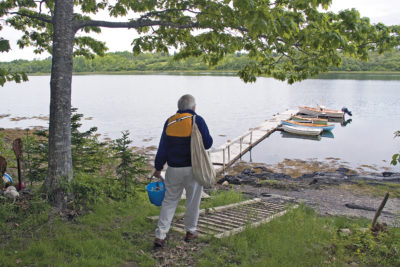
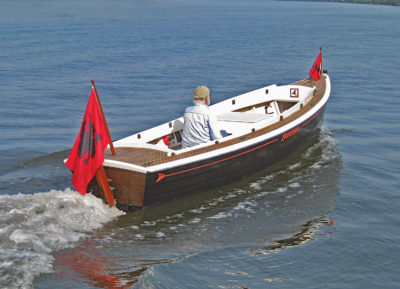
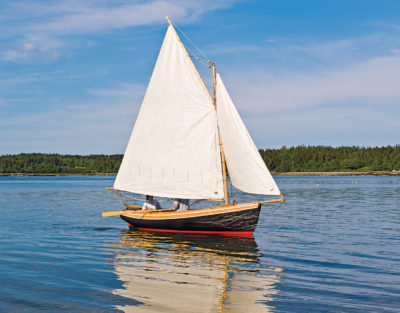
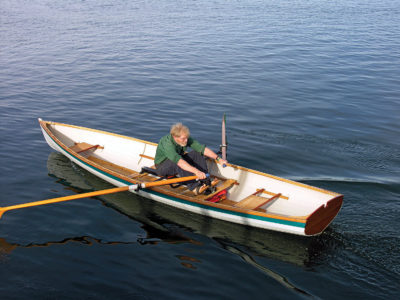
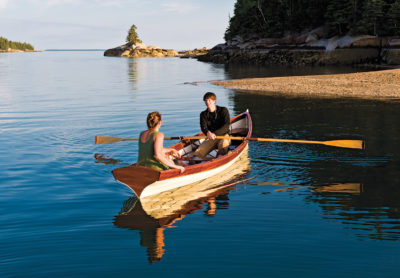

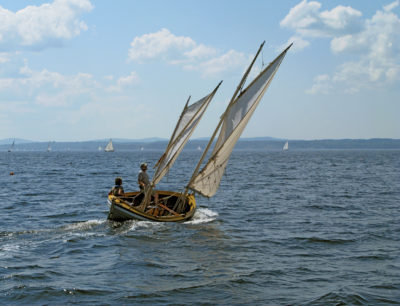
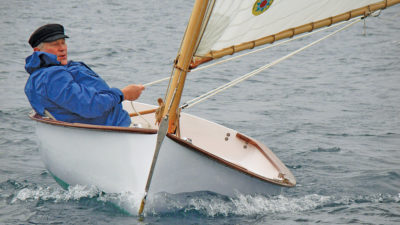
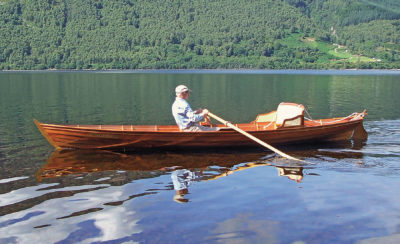
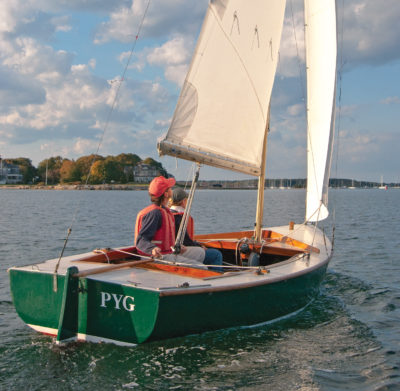
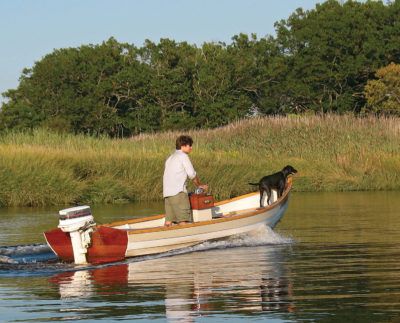
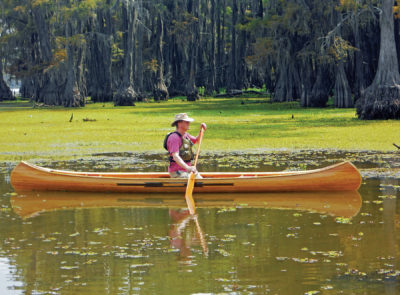
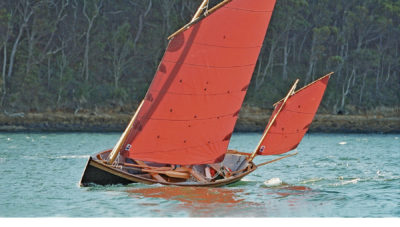
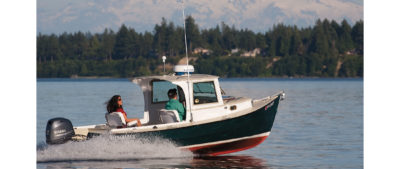
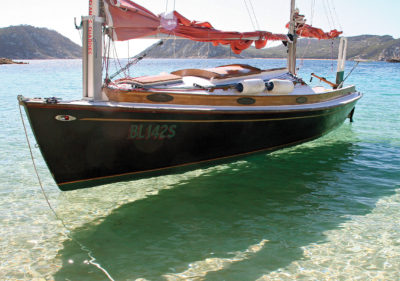

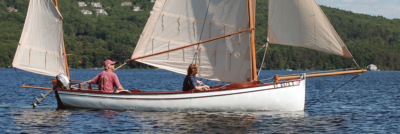
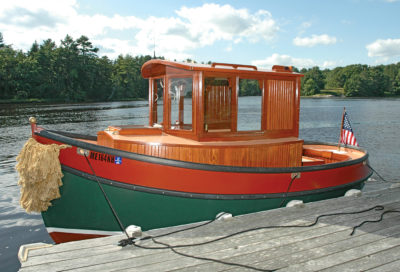
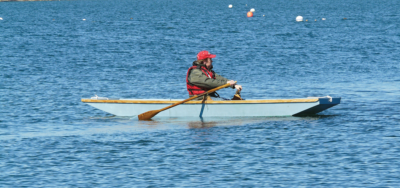
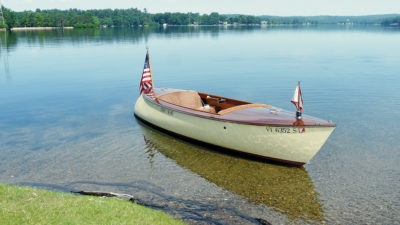
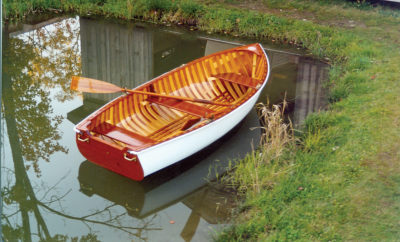
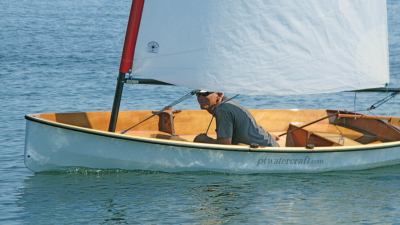
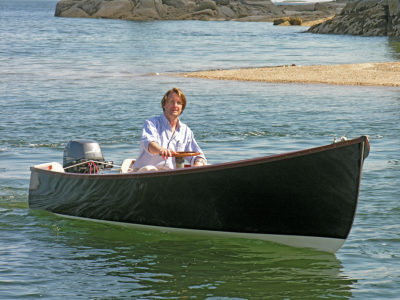
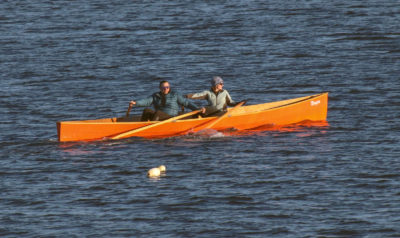
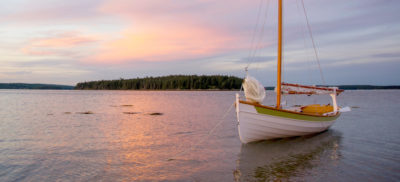
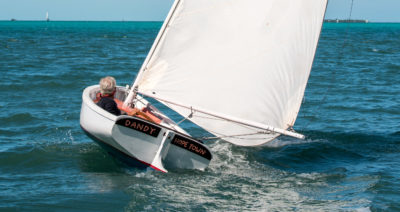
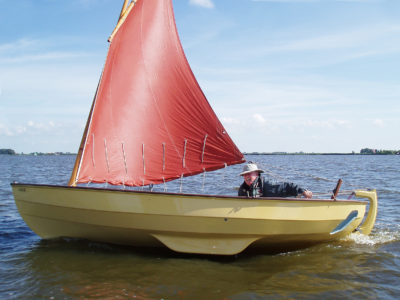
Great build! this is probably a dumb question, but how do you get into the boat. I recently built an 8′ kit and I must say getting into (sort of OK) but getting out of it is a real challenge. Likes to tip, floats up rapidly showing me a little. Any suggestion would be welcomed.
Eric Rinehart
I have a small dinghy and usually beach it and step out carefully from the bow with one foot in the very center of the boat and one on the sand. It rolls less because you are in the narrowest part of the boat. On a dock, facing the boat, I put both hands on the dock and then sit with my butt in between them. There is no way to do it and retain your dignity.
Keep your weight low, hold on to the gunwales. It’s an art!
Glad to see this article, as I am in the middle of stripping an Old Town 9′ dinghy for my 1927 cruiser RIPTIDE. Any suggestions on how to cleanly strip the decades-old varnish without having to scrape it off would be most gratefully appreciated. The canoe-like frames make getting in between them really a challenge.
Hi Peter,
I am also restoring an Old Town 9′ dinghy, and have found that a 50/50 mix of lacquer thinner and denatured alcohol works well in getting the finish off. It still requires a lot of work, but it does work.